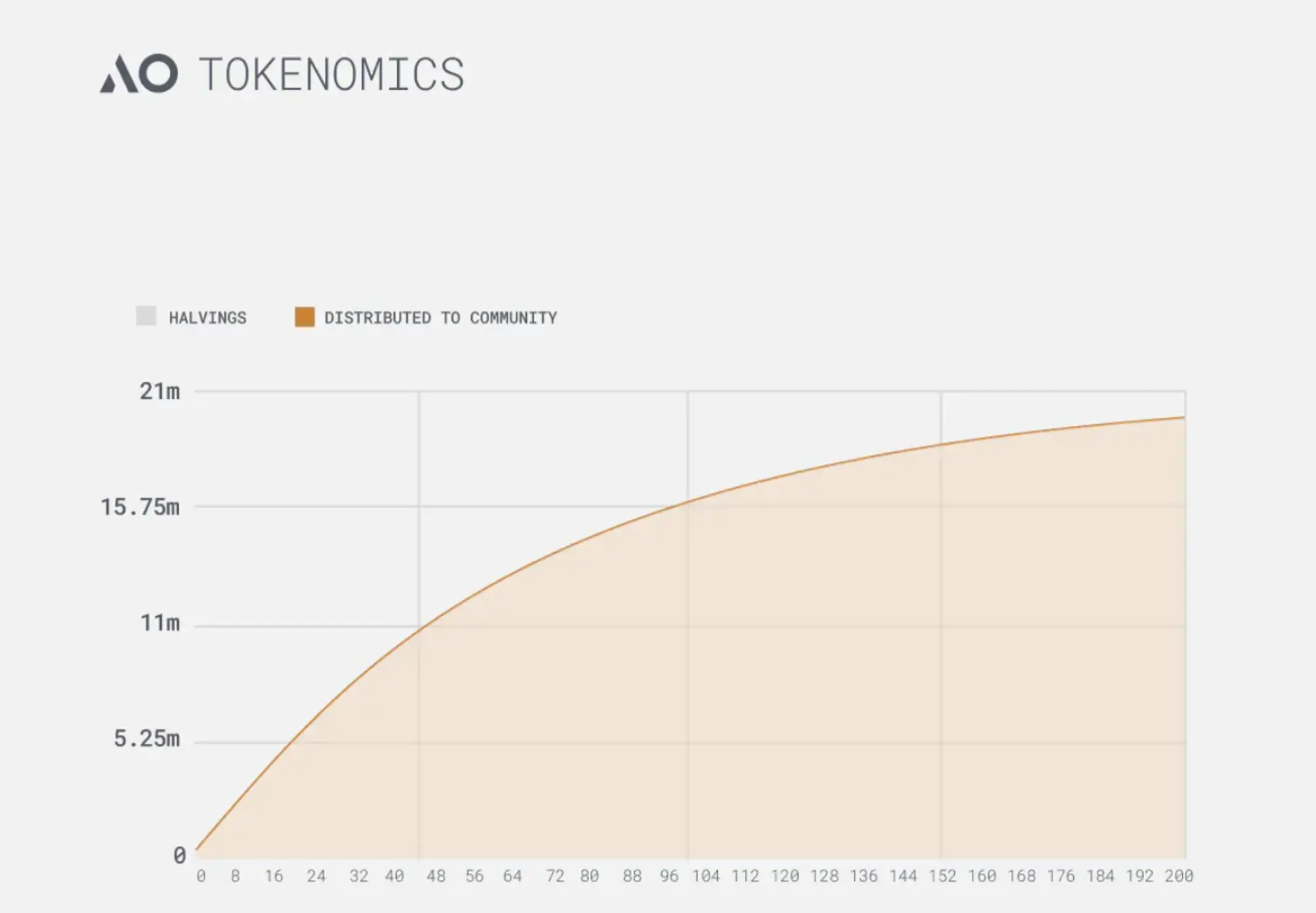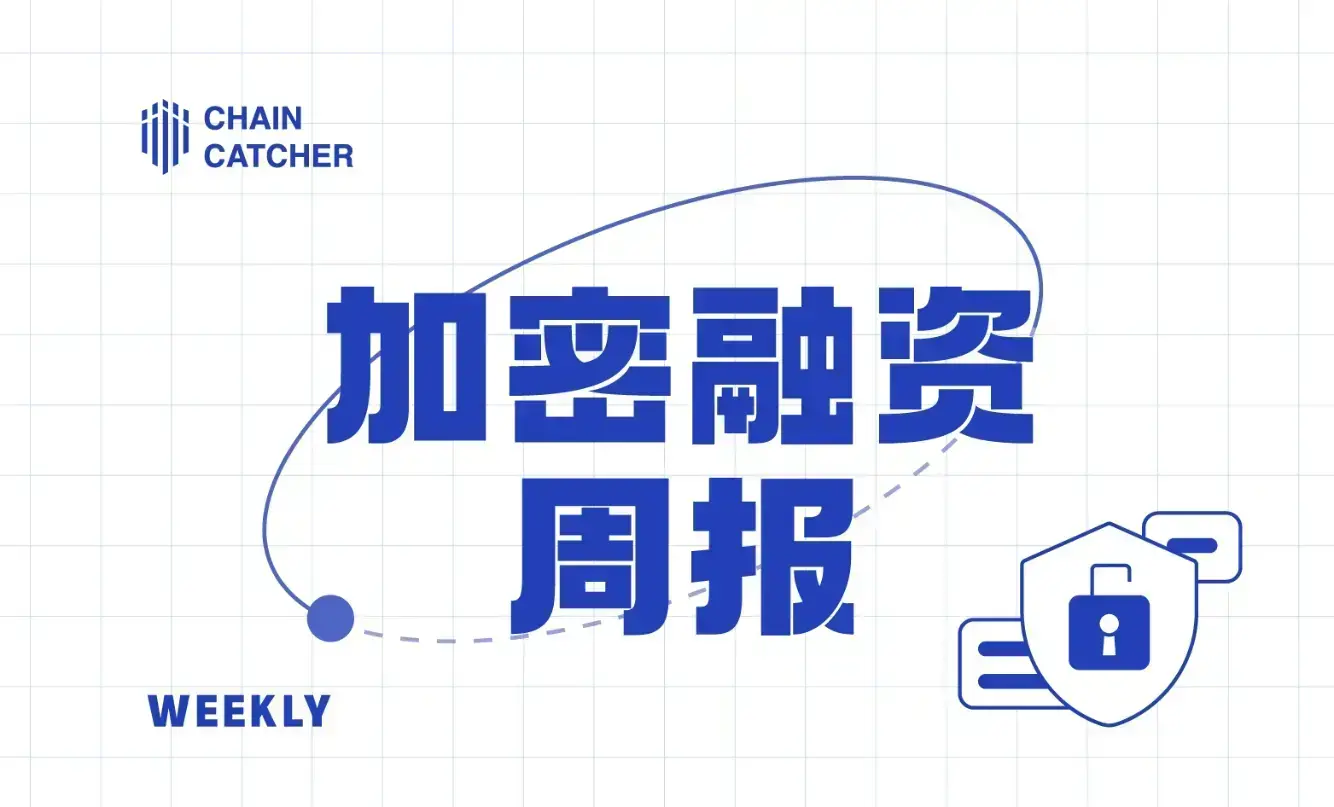The AO token economics model is released, revealing how to maximize efficiency in acquiring AO tokens

On June 13th at 11 PM Beijing time, the Arweave official released the AO token economics. Based on the currently available information, let's analyze how to acquire AO tokens from the perspective of maximizing efficiency. This article is for cryptocurrency economic analysis only and does not constitute any investment advice!
Interpretation of AO Token Economics Model
According to the AO token economics, AO is a 100% fair launch token that follows the Bitcoin economic model. Like Bitcoin, the total supply of AO is 21 million tokens, with a halving cycle of 4 years. AO is distributed every 5 minutes, with a monthly allocation of 1.425% of the remaining supply. However, unlike Bitcoin, AO does not have a sudden "halving event". It is well known that Bitcoin undergoes a halving every 210,000 blocks (approximately every 10 minutes), roughly every four years. In contrast, the halving of AO tokens is a relatively smooth process, with token issuance decreasing on a monthly basis. Although this may not significantly impact the efficiency of acquiring AO, early acquisition of AO should not be overlooked; the earlier you acquire, the greater the benefits.

At the same time, the official has consistently mentioned that the AO token is a 100% fair launch token. Currently, the official understanding of "100% fair launch" is that AO tokens can only be obtained by holding specific assets (currently $AR, $AOCRED, $stETH). Even the official has not reserved any shares for their team, investment institutions, or ecological community projects. This highlights the project's broader vision compared to many other crypto projects on the market. It also indicates that the acquisition of AO entirely depends on the amount of capital and the type of token assets held. Our task is to seek the most efficient way to acquire AO tokens with limited capital.
The acquisition of AO tokens is currently divided into two phases. The first phase ends on June 18th, while the second phase begins. The acquisition in the first phase was only known to everyone at the moment the token economics was announced on June 13th. However, it is reasonable that from February 27, 2024 (the day the AO public testnet goes live) until June 18th, 100% of the minted AO tokens will be distributed to $AR token holders based on their respective balances held every 5 minutes. As of June 13, 2024, each $AR can acquire approximately 0.016 AO tokens, with a total of over 1 million tokens distributed in the first phase.
Strategies for Maximizing AO Token Acquisition
The circulation in the first phase accounts for only about 5%, while the second phase is the main event. Our focus should be on how to maximize the acquisition of AO tokens in the second phase. 33.3% of AO tokens will be distributed to AR token holders, while 66.6% of AO will be used for other assets staked in AO (currently only stETH). Additionally, AOCRED will be exchanged for AO at a ratio of 1000:1 (this portion of AO will be provided from the AO tokens generated by the AR held by Forward Research).
After the second phase starts, each AR can earn 0.016 AO in the first year, while the number of AO tokens obtained from other eligible cross-chain assets (non-AR assets) deposited in the AO network will be determined by the trading volume of the cross-chain assets multiplied by their annual staking yield rate and the ratio of total cross-chain assets. Currently, stETH is the only eligible cross-chain asset, so the 66.6% of AO distributed to other assets staked in AO will go to the stETH liquidity pool. Therefore, you can simply understand that the exact number of AO tokens received from staking stETH depends on the value of your staked stETH relative to the total asset value of the liquidity pool.
If the assets you stake account for 0.01% of the total assets in the liquidity pool, staking for one year can yield 210 AO. Currently, the pool is over 20 million dollars (you can see it here). Assuming that after the second phase opens, the TVL of the liquidity pool is 1 billion dollars and remains constant for a year, if you stake stETH worth 1000 dollars, you can get 2.1 AO after a year. If the market cap of AR is 2 billion dollars and remains constant for a year, if you hold 1000 dollars of AR in your wallet, you can get 0.485 AO after a year. It seems that staking stETH is more cost-effective, and currently, this is indeed the case. However, the stETH liquidity pool and the market cap of AR cannot remain unchanged within a year. You still need to constantly calculate based on the ratio of other asset liquidity pool TVL to AR market cap (in USD):
- When liquidity pool TVL / AR market cap ≈ 2, the AO obtained from staking assets of the same value is similar to that from holding AR of the same value;
- When liquidity pool TVL / AR market cap > 2, holding AR of the same value yields more AO than staking assets of the same value;
- When liquidity pool TVL / AR market cap < 2, staking assets of the same value yields more AO than holding AR of the same value;
Note that the AO tokens minted after the second phase starts will not be unlocked until February 8, 2025, at which point the circulation rate will be 15%, with a total circulation of about 3 million tokens.
In addition, we can also calculate the risks and costs of acquiring AO, which significantly impact the subsequent price of AO. AR holders only need to hold, while stETH is obtained by staking ETH in Lido. Currently, the APR (annual percentage rate) of stETH is 3.3%. Since staking stETH in AO requires giving up this portion of annual yield to the AO project team, this income was originally a vested interest of stETH holders. Therefore, the APR of stETH can be viewed as the cost for stETH stakers. If the liquidity pool TVL reaches 1 billion, the cost for stETH stakers to acquire AO would be 15.7 dollars. However, this is a calculation result under controlled variables, and the specific calculation formula is (only considering the current situation where stETH is the only cross-chain asset):

For short-term investors, both staking stETH and holding AR carry the risk of price decline. Of course, many CEXs offer 0 leverage borrowing services, and the borrowing rate usually does not exceed 1%. However, considering that the return cycle for acquiring AO incentives is relatively long, please weigh your decisions accordingly. Currently, the cost of exchanging AOCRED for AO is about 50 - 60 dollars per AO (please ensure to exchange AOCRED for AO before June 27, 2024, as it will expire after that). This also needs to wait until February 8, 2025, to unlock. Therefore, the price of 1000*AOCRED can be seen as the futures price of AO. However, after the AO testnet is released, the growth in AR's market cap will far exceed 1 billion, and at that time, the total circulation will only be over 3 million, leaving significant room for the price of AO.
For long-term investors, using time to eliminate market volatility risks not only allows for capital appreciation but also enables continuous earnings from AO interest (including AO growth dividends).
Summary
The above is an analysis of the AO token. In summary, focus on the changes in liquidity pool TVL and AR market cap, and adjust strategies based on the cost of acquiring tokens to maximize capital efficiency. In addition to considering costs, do not overlook the potential risks of price fluctuations. Utilizing strategies like 0 leverage borrowing can help mitigate some risks, and the cost and unlocking time for exchanging AOCRED for AO are also important factors to consider in decision-making. Of course, long-term holding of tokens only requires waiting for the flowers to bloom.









